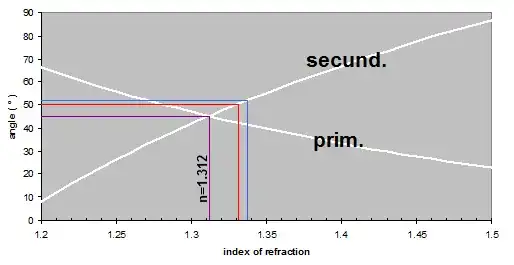This answer to the question Is there a zone where 'colour' overlaps between double rainbows? raises the possibility that, at suitable wavelengths, the primary and secondary rainbows can overlap, if the wavelength is such that the refractive index goes down to about $n=1.312$ which, according to this page, can happen in the near-IR regime, though dangerously close to the resonances in the IR region.

I have a related question: is this possible to do by changing the liquid instead of the wavelength? That is, I would want a liquid that has a refractive index of around $n_*=1.312$ in the visible range, ideally with a nice linear gradient in the neighbourhood of $n_*$ (and, even better, controllable so that it goes from just below to just above $n_*$ with changes to e.g. the concentration of some dopant or whatever).
For this to work, the liquid would have to be relatively colourless as regards absorption, safe to handle, and easily sprayable. The idea would be to run demonstrations with this in relatively public settings, and the like, so it needs to be reasonably cheaply accessible in reasonable quantities; substances sold for refractive-index matching on per-milliliter bases are somewhat outside of that envelope.
Is this possible?